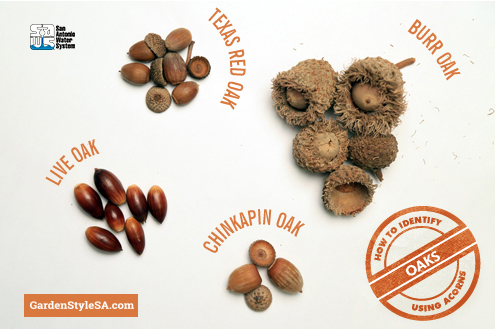The humble acorn is more than just a tasty snack for many mammals, birds and insects. It’s also a valuable tool used by botanists to identify oak trees.
We have been blessed — or cursed — with an abundance of acorns this year. Production of acorns increases and diminishes according to a periodic schedule together with annual weather conditions. And this year all are in alignment, just like the recent supermoon.
Known as an acorn, the seed from an oak is a blessing to a host of mammals, birds, insects and even fungi. Certain mammals seem to have a problem with the tannic acids from the acorns staining their driveway or patio.
But from the botanist’s perspective, the seed and its cap hold an inner meaning. Because of the oak’s, shall we say, rather promiscuous pollen behavior, the traditional method of tree identification from leaves, twigs and bark is not always accurate. Botanists have instead relied on the shape, size and color of the acorn and its cup.
Here’s how to identify several of our local oaks:
Bur oak
-
- –
Quercus macrocarpa
For those of you who still retain some high school Latin, the “big seed” oak is no surprise. Although the seed is large, varying from 1 to 2 inches long and almost as wide, it is the cup which distinguishes this oak. The common name of bur oak is derived from the thick fringe surrounding the outer edge of the cup, reminiscent of the prickles or hooks on herbaceous plants or the ragged edges on wood or steel from cutting tools. The cup frequently encloses 80-90 percent of the acorn.
The cups make the basis of some great craft ideas. Some paint them with glittery gold or silver. Others will use them as the basis for miniature bird nest ornaments and insert them into the Christmas tree or holiday centerpiece displays.
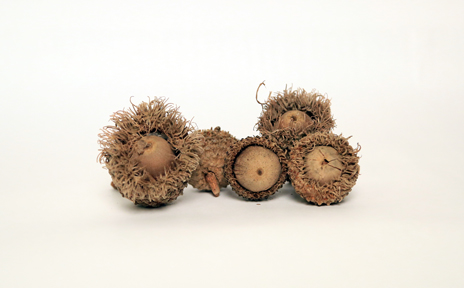
Live oak
-
- –
Quercus fusiformis
Our most ubiquitous oaks, live oaks produce a prodigious amount of seed every 5-7 years. A unique feature of our local live oak acorn is its football shape with light brown stripes against a dark reddish brown field. No other acorn has this distinctive shape and coloring. The cup is somewhat more pedestrian with a squatty shape that covers only about a ¼ of the acorn, which ranges in length of ¾ to 1 inch.
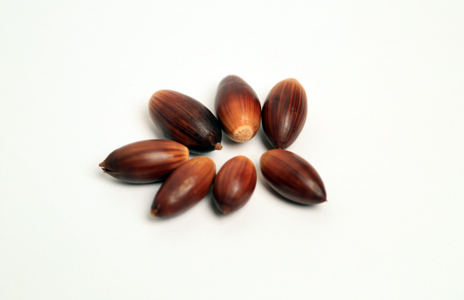
Texas red oak
-
- –
Quercus buckleyi
The Texas red oak, known for its lovely fall color, inhabits mostly on the north and east slopes of hills or in any sheltered canyon. Its acorn also has a striped appearance that is enhanced by a fuzz on the outside of the acorn. The acorn itself is a rotund fellow about 1 inch long and almost as wide. Red oaks are easy to find in the fall. They need several months to mellow before wildlife find them attractive.
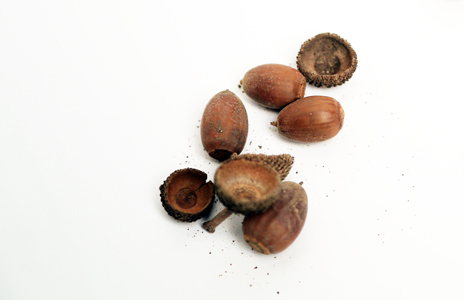
Chinkapin oak
-
- –
Quercus muehlenbergii
A member of the white oak subfamily, chinkapin (also spelled chinquapin) acorns are difficult to find in the wild or the landscape. The reason: chinkapin acorns are extremely tasty and squirrels, raccoons, opossums, deer, turkeys, jay and every other known critter are simply waiting for them to ripen.
The acorn is long, though not as football-shaped as the live oak, about 1 inch to 1 ¼ inches in length. The cup covers at least 1/3 to ½ of the acorn and is a medium brown color.
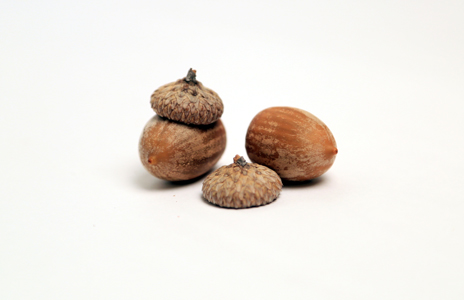
Oaks are one of the major constituents of the great oak-juniper forest ecosystem that stretches haphazardly from east of College Station to just east of Los Angeles. It’s helpful to know a bit about the individual species that make up this great forest, especially since the oaks tend to hybridize quite readily.
